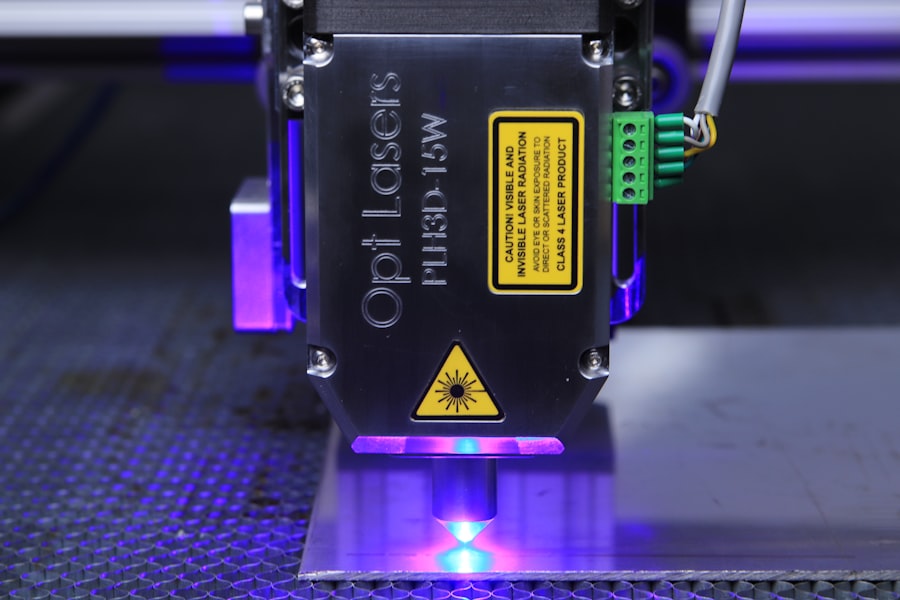Laser hair removal is a popular cosmetic procedure that utilizes concentrated beams of light to target and eliminate unwanted hair. The technology behind this method is based on the principle of selective photothermolysis, where the laser energy is absorbed by the pigment in the hair follicles, leading to their destruction while sparing the surrounding skin. As you consider this option, it’s essential to understand how the process works and what to expect during your treatment journey.
During a typical session, a trained technician will use a handheld device to deliver laser pulses to the treatment area. You may feel a slight tingling sensation or a mild snapping feeling as the laser targets the hair follicles. The procedure is generally quick, with small areas taking only a few minutes and larger areas requiring more time.
While results can vary from person to person, many individuals experience a significant reduction in hair growth after just a few sessions. Understanding these fundamentals can help you make an informed decision about whether laser hair removal is right for you.
Key Takeaways
- Laser hair removal targets hair follicles with concentrated light to inhibit future hair growth
- Factors affecting the number of sessions needed include hair color, skin color, and hair thickness
- Multiple laser hair removal sessions can lead to long-term hair reduction and smoother skin
- Potential risks and side effects include skin irritation, redness, and changes in skin pigmentation
- Prepare for laser hair removal by avoiding sun exposure and shaving the treatment area beforehand
Factors Affecting the Number of Sessions Needed
The number of laser hair removal sessions you will need can vary significantly based on several factors. One of the most critical elements is your hair type and color. Darker hair tends to respond better to laser treatments because the contrast between the hair and skin allows the laser to target the follicles more effectively.
If you have lighter or finer hair, you may require additional sessions to achieve your desired results. Additionally, your skin type plays a role; individuals with lighter skin typically see quicker results than those with darker skin tones. Another factor influencing the number of sessions is the area being treated.
Some regions of the body, such as the legs or back, may require more treatments due to the density and thickness of hair in those areas. Hormonal influences can also affect hair growth patterns, particularly in women. Conditions like polycystic ovary syndrome (PCOS) can lead to increased hair growth, necessitating more frequent sessions.
By understanding these factors, you can better prepare for your laser hair removal journey and set realistic expectations for your results.
Benefits of Multiple Laser Hair Removal Sessions

One of the primary advantages of undergoing multiple laser hair removal sessions is the potential for long-lasting results. Hair grows in cycles, and not all hairs are in the same growth phase at any given time. By attending multiple sessions, you can target hairs in different stages of growth, leading to a more comprehensive reduction in hair density over time.
This cumulative effect means that while you may not see immediate results after your first session, persistence will pay off as you progress through your treatment plan. Additionally, multiple sessions can lead to smoother skin and reduced irritation compared to other hair removal methods like shaving or waxing. With each session, you may notice that your skin feels softer and less prone to ingrown hairs or razor burn.
Many individuals find that they spend less time on grooming routines as they experience a significant decrease in hair regrowth. This convenience can be a game-changer for those with busy lifestyles, allowing you to enjoy smoother skin without the hassle of frequent maintenance.
Potential Risks and Side Effects of Laser Hair Removal
| Category | Potential Risks and Side Effects |
|---|---|
| Skin Irritation | Redness, swelling, and discomfort in the treated area |
| Pigment Changes | Lightening or darkening of the skin in the treated area |
| Burns | Blistering, crusting, or scarring in severe cases |
| Eye Injury | Damage to the eyes if proper eye protection is not used during treatment |
| Unwanted Hair Growth | Stimulation of hair growth in adjacent areas |
While laser hair removal is generally considered safe, it’s essential to be aware of potential risks and side effects associated with the procedure. Common side effects include temporary redness, swelling, or discomfort in the treated area, similar to what you might experience after a mild sunburn. These effects typically subside within a few hours to a couple of days.
However, some individuals may experience more severe reactions, such as blistering or changes in skin pigmentation, particularly if they have darker skin tones or do not follow pre-treatment guidelines. To minimize risks, it’s crucial to choose a qualified practitioner who uses FDA-approved equipment and follows safety protocols. Before undergoing treatment, discuss any concerns you may have with your technician or dermatologist.
They can provide guidance on what to expect and how to care for your skin before and after each session. Being informed about potential side effects will help you make educated decisions and ensure that you are prepared for your laser hair removal experience.
How to Prepare for Laser Hair Removal Sessions
Preparation is key to achieving optimal results from your laser hair removal sessions. Before your first appointment, it’s advisable to avoid sun exposure for at least two weeks prior to treatment. Tanning can increase the risk of side effects and may affect the efficacy of the laser.
Additionally, refrain from waxing or plucking hairs in the treatment area for several weeks before your session, as these methods can remove the hair follicle that the laser targets. On the day of your appointment, arrive with clean skin free from lotions, creams, or makeup. Your technician may apply a topical anesthetic to minimize discomfort during the procedure, so be sure to discuss any pain management options beforehand.
It’s also helpful to wear loose-fitting clothing that allows easy access to the treatment area. By taking these preparatory steps, you can enhance your comfort level and ensure that your session goes smoothly.
Aftercare and Maintenance for Laser Hair Removal
Immediate Post-Treatment Care
After a laser hair removal session, it’s common to experience some redness or swelling in the treated area. To soothe your skin, apply a cool compress or aloe vera gel as needed.
Protecting Your Skin from the Sun and Irritation
It’s essential to avoid sun exposure for at least two weeks post-treatment. Wearing sunscreen with a high SPF can help protect your skin from UV damage. Additionally, avoid hot baths, saunas, or vigorous exercise for a few days after your session to minimize irritation.
Maintaining Healthy Skin
To ensure the best possible results from your laser hair removal treatments, refrain from using harsh skincare products or exfoliants on the treated area until it has fully healed. By following these guidelines, you can help keep your skin healthy and achieve optimal results.
Alternatives to Laser Hair Removal
If laser hair removal doesn’t seem like the right fit for you, there are several alternative methods for managing unwanted hair growth. Traditional options include shaving, waxing, and depilatory creams, each with its own set of pros and cons. Shaving is quick and easy but often leads to stubble and requires frequent maintenance.
Waxing provides longer-lasting results but can be painful and may cause irritation for some individuals. For those seeking more permanent solutions without lasers, electrolysis is another option worth considering.
However, electrolysis can be time-consuming since each follicle must be treated separately.
Consultation and Recommendations for Laser Hair Removal
Before committing to laser hair removal, scheduling a consultation with a qualified practitioner is crucial. During this initial meeting, you’ll have the opportunity to discuss your goals, ask questions about the procedure, and learn about what to expect throughout your treatment journey. Your practitioner will assess your skin type and hair characteristics to determine if you are a suitable candidate for laser treatment.
It’s also essential to share any medical history or skin conditions with your technician during this consultation. They can provide personalized recommendations based on your unique needs and help you set realistic expectations regarding results and potential side effects. By taking this step, you’ll be better equipped to make informed decisions about your laser hair removal experience and ensure that it aligns with your beauty goals.
In conclusion, understanding laser hair removal involves recognizing its benefits, potential risks, and preparation requirements. By considering factors such as hair type and treatment area while also exploring alternatives, you can make an informed choice about whether this method suits your needs. With proper consultation and aftercare, laser hair removal can lead to smoother skin and reduced maintenance over time—making it an appealing option for many seeking long-term solutions for unwanted hair.
If you are wondering whether 8 sessions of laser hair removal are enough, you may want to check out this article on customizing your laser hair removal treatments. This article discusses how the number of sessions needed can vary depending on individual factors such as hair type, skin tone, and desired results. For more information on laser hair removal and other related topics, visit inlaserhairremoval.com and explore their fashion and beauty section at inlaserhairremoval.com/fashion-home-4.
FAQs
What is laser hair removal?
Laser hair removal is a cosmetic procedure that uses a concentrated beam of light (laser) to remove unwanted hair. The light is absorbed by the pigment in the hair follicles, which damages the follicle and inhibits future hair growth.
How many sessions of laser hair removal are typically needed?
The number of sessions needed for laser hair removal varies depending on factors such as the individual’s skin and hair type, the area being treated, and the specific laser technology being used. On average, most people require 6-8 sessions spaced 4-6 weeks apart to achieve optimal results.
Is 8 sessions of laser hair removal enough?
For many individuals, 8 sessions of laser hair removal may be enough to achieve significant hair reduction in the treated area. However, some people may require additional sessions for complete hair removal or maintenance treatments to address any regrowth.
What factors can affect the number of sessions needed for laser hair removal?
Factors that can affect the number of sessions needed for laser hair removal include the individual’s skin and hair color, the thickness and density of the hair, hormonal imbalances, and the specific area being treated. Additionally, adherence to the recommended treatment schedule and post-treatment care can impact the overall effectiveness of the procedure.
Are there any risks or side effects associated with laser hair removal?
While laser hair removal is generally considered safe, some potential risks and side effects may include temporary skin irritation, redness, swelling, and changes in skin pigmentation. It is important to consult with a qualified and experienced practitioner to minimize the risk of adverse effects and ensure the best possible outcome.






